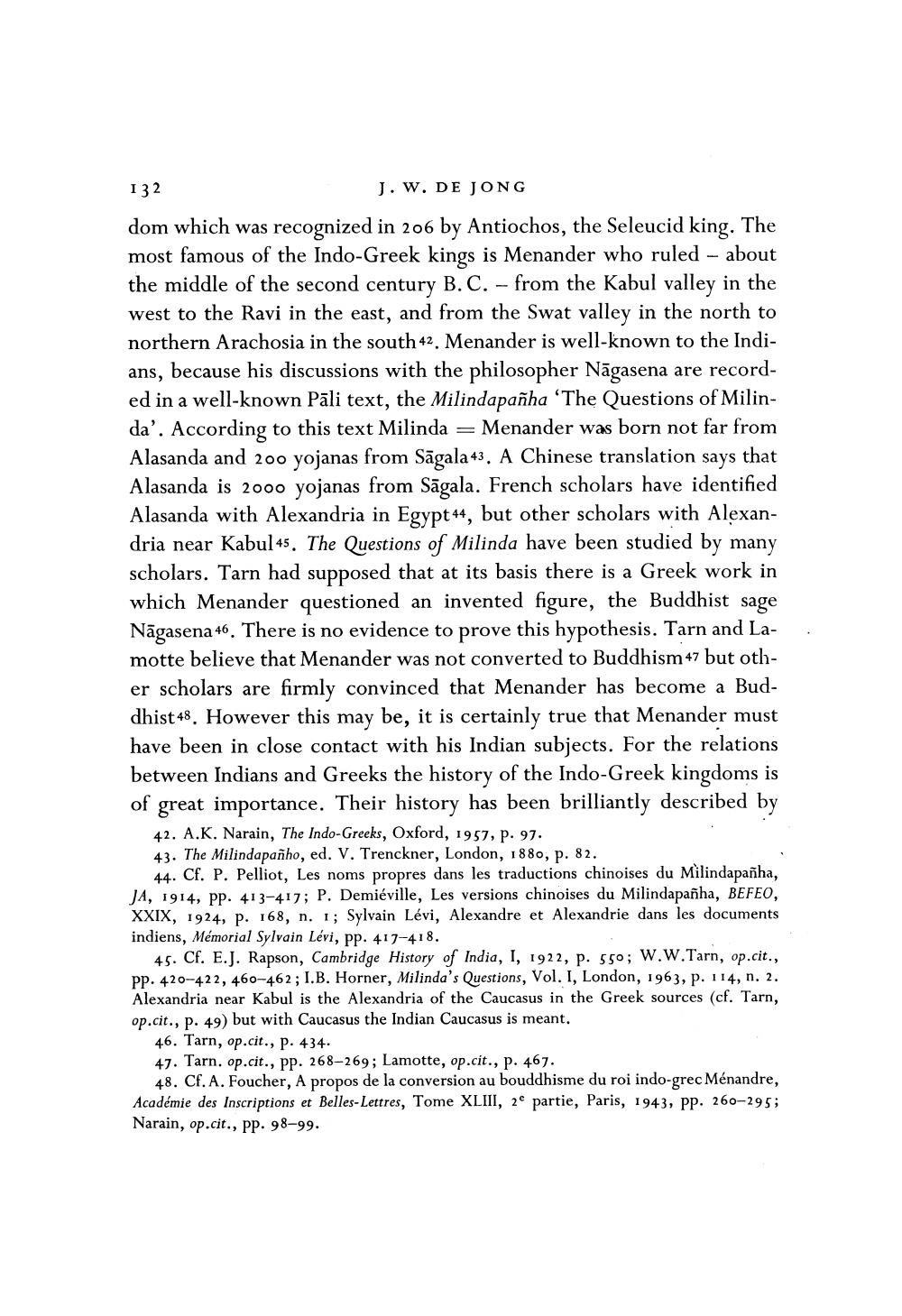________________
132
J. W. DE JONG dom which was recognized in 206 by Antiochos, the Seleucid king. The most famous of the Indo-Greek kings is Menander who ruled - about the middle of the second century B.C. - from the Kabul valley in the west to the Ravi in the east, and from the Swat valley in the north to northern Arachosia in the south 42. Menander is well-known to the Indians, because his discussions with the philosopher Nāgasena are recorded in a well-known Pāli text, the Milindapañha 'The Questions of Milinda'. According to this text Milinda = Menander was born not far from Alasanda and 200 yojanas from Sāgala 43. A Chinese translation says that Alasanda is 2000 yojanas from Sāgala. French scholars have identified Alasanda with Alexandria in Egypt 44, but other scholars with Alexandria near Kabul 45. The Questions of Milinda have been studied by many scholars. Tarn had supposed that at its basis there is a Greek work in which Menander questioned an invented figure, the Buddhist sage Nāgasena 46. There is no evidence to prove this hypothesis. Tarn and Lamotte believe that Menander was not converted to Buddhism 47 but other scholars are firmly convinced that Menander has become a Buddhist 48. However this may be, it is certainly true that Menander must have been in close contact with his Indian subjects. For the relations between Indians and Greeks the history of the Indo-Greek kingdoms is of great importance. Their history has been brilliantly described by
42. A.K. Narain, The Indo-Greeks, Oxford, 1957, p. 97. 43. The Milindapanho, ed. V. Trenckner, London, 1880, p. 82.
44. Cf. P. Pelliot, Les noms propres dans les traductions chinoises du Milindapanha, JA, 1914, pp. 413-417; P. Demiéville, Les versions chinoises du Milindapanha, BEFEO, XXIX, 1924, p. 168, n. 1; Sylvain Lévi, Alexandre et Alexandrie dans les documents indiens, Mémorial Sylvain Lévi, pp. 417-418.
45. Cf. E.J. Rapson, Cambridge History of India, I, 1922, p. 550; W.W.Tarn, op.cit., pp. 420-422, 460-462; I.B. Horner, Milinda's Questions, Vol. I, London, 1963. p. 114, n. 2. Alexandria near Kabul is the Alexandria of the Caucasus in the Greek sources (cf. Tarn, op.cit., p. 49) but with Caucasus the Indian Caucasus is meant.
46. Tarn, op.cit., p. 434. 47. Tarn, op.cit., pp. 268-269; Lamotte, op.cit., p. 467.
48. Cf. A. Foucher, A propos de la conversion au bouddhisme du roi indo-grec Ménandre, Académie des Inscriptions et Belles-Lettres, Tome XLIII, 2° partie, Paris, 1943, pp. 260-295; Narain, op.cit., pp. 98-99.




